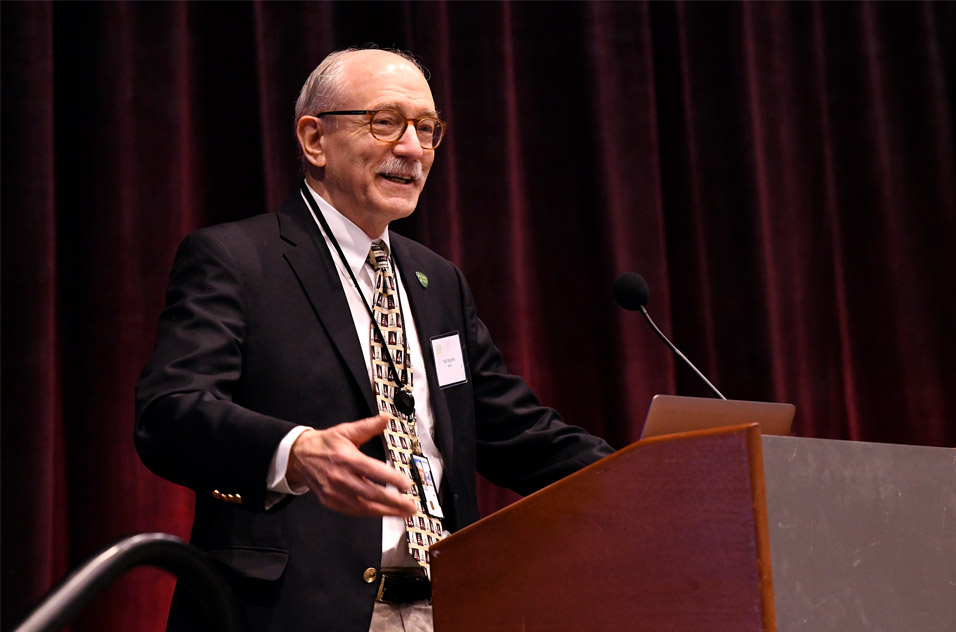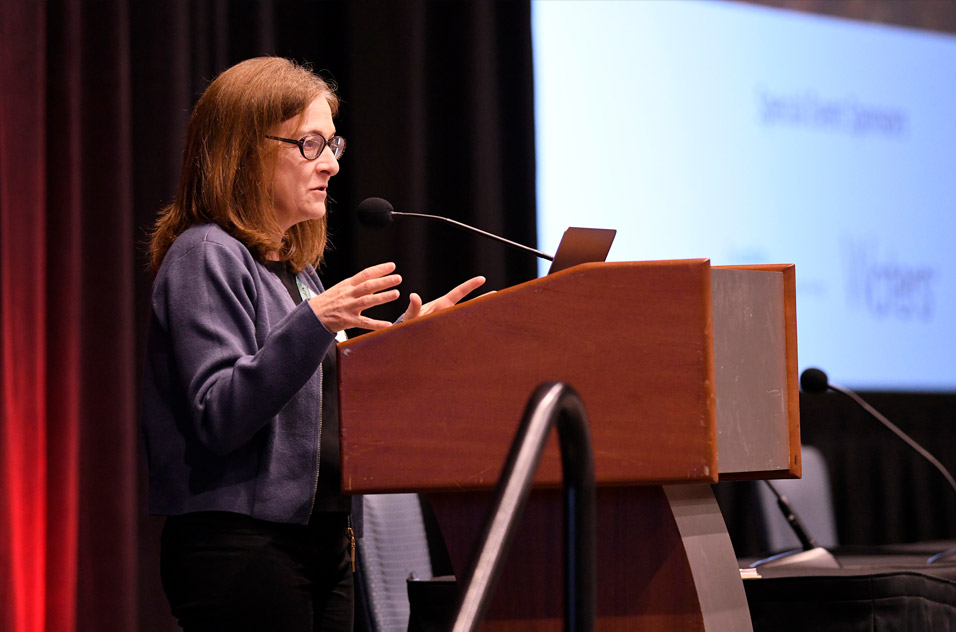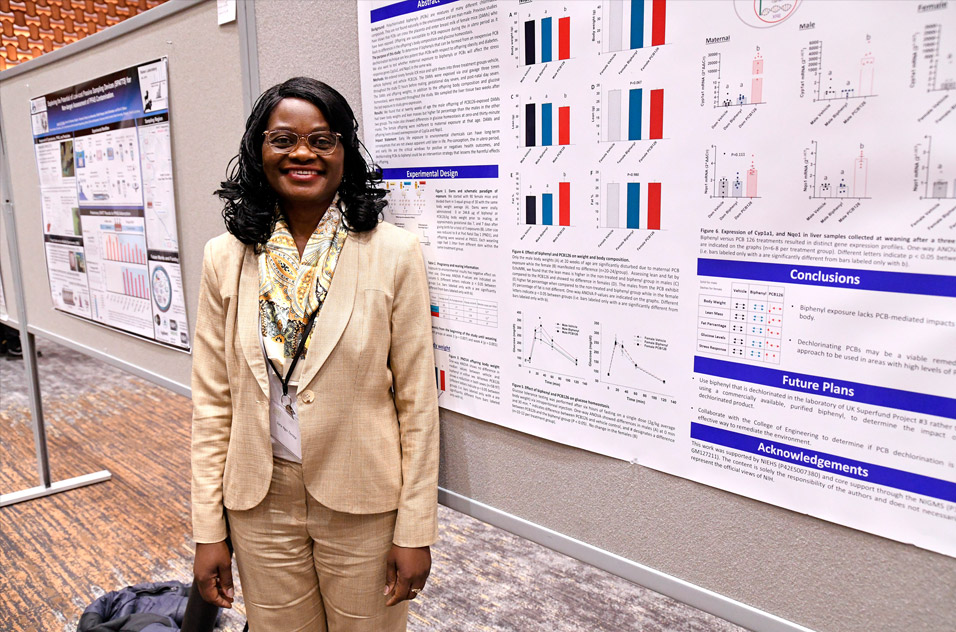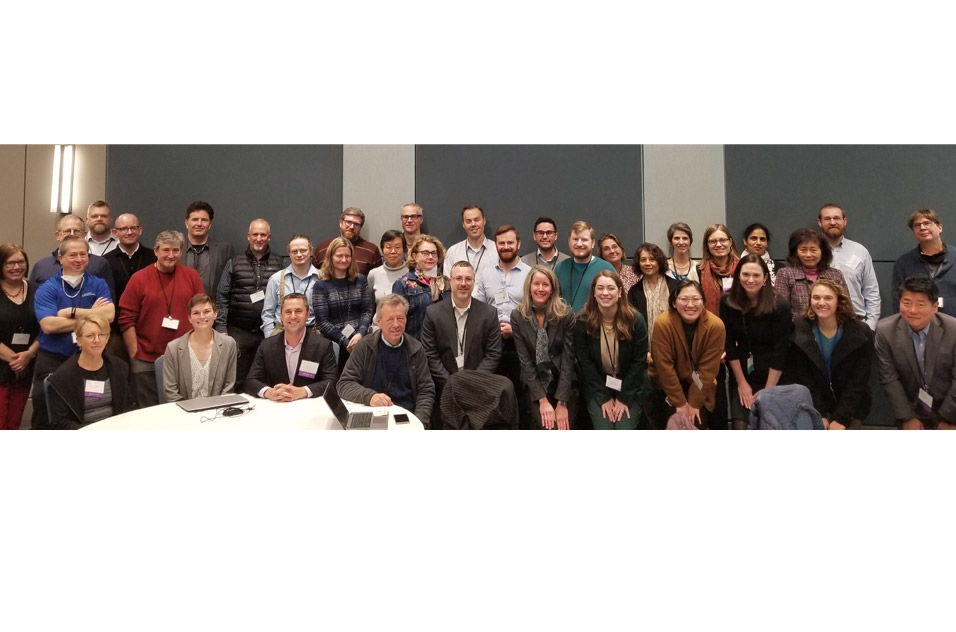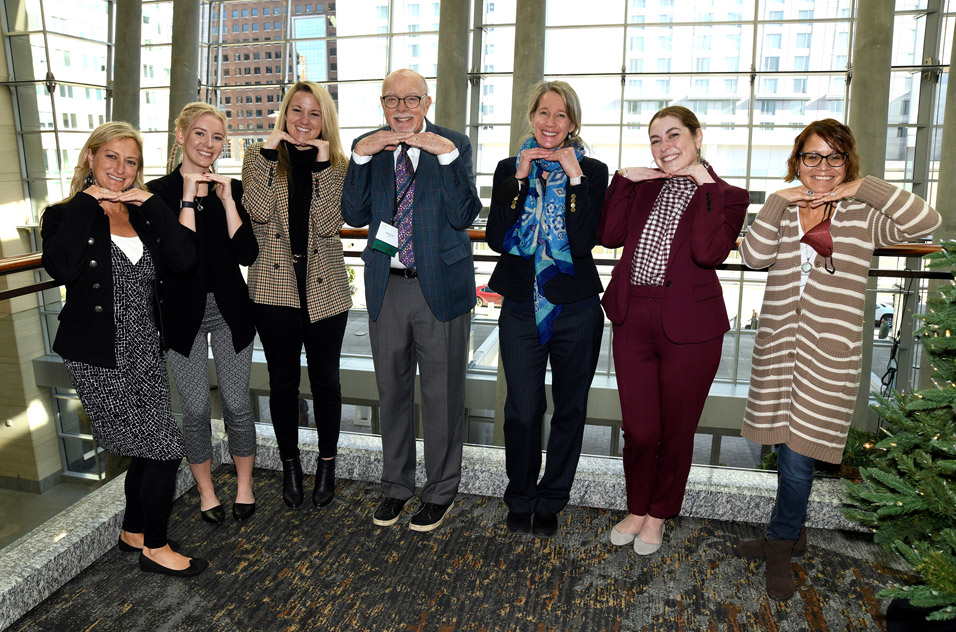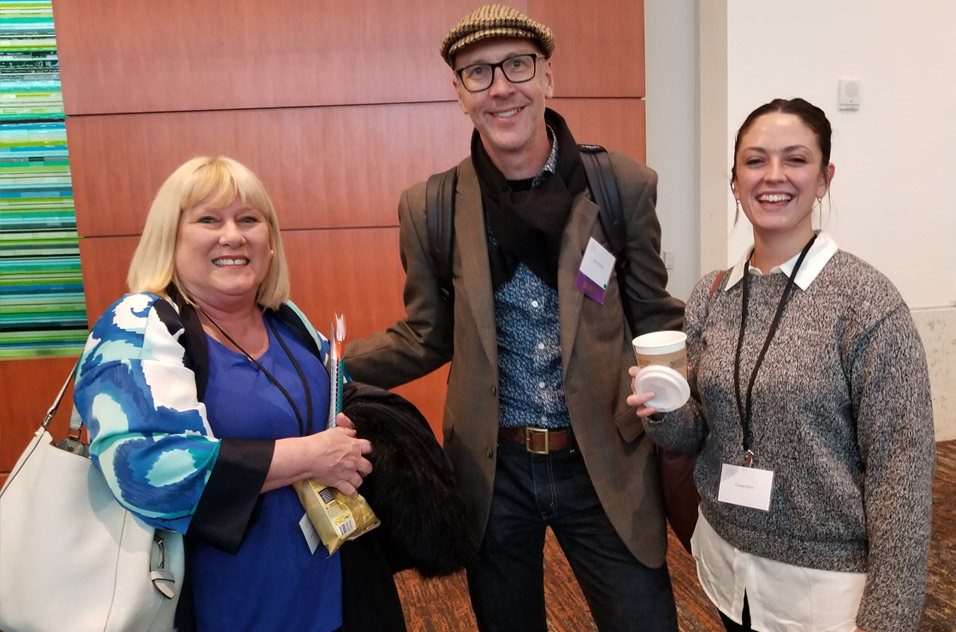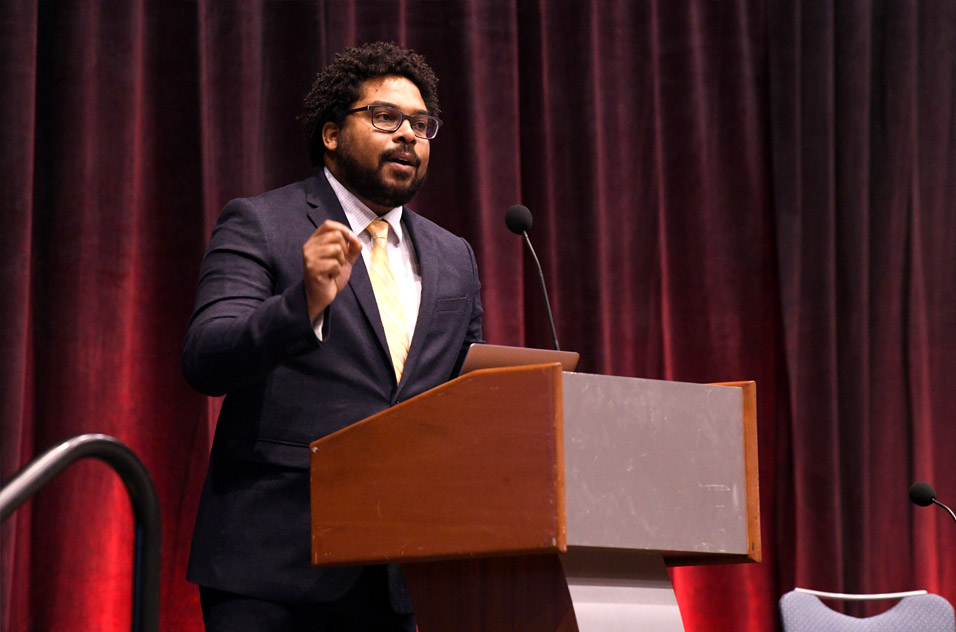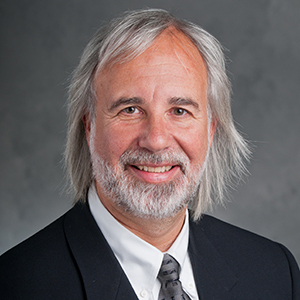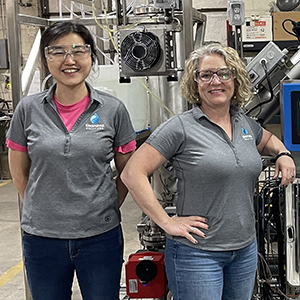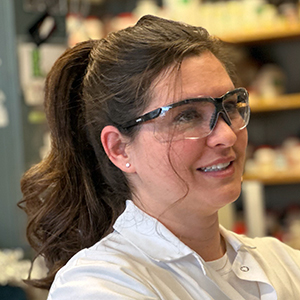The NIEHS Superfund Research Program (SRP) marked its 35th anniversary Dec. 14-17, 2022, at its first in-person annual meeting since 2019. Researchers, trainees, and community partners from across the U.S. gathered in Raleigh, North Carolina, to learn about select SRP-funded projects through workshops and presentations. The SRP centers at North Carolina State University (NCSU) and the University of North Carolina at Chapel Hill (UNC) hosted the event.
“The theme of this year’s meeting — ‘System Approaches for Innovative and Inclusive Environmental Health Solutions’ — is very fitting because that is what SRP is all about,” said NIEHS Director Rick Woychik, Ph.D., during opening remarks.
Indeed, when SRP launched in 1987 as a university-based research program, its founding philosophy — to reduce exposures to environmental contaminants through a multidisciplinary approach — was novel, according to William Suk, Ph.D., who retired as SRP’s director at the end of December.
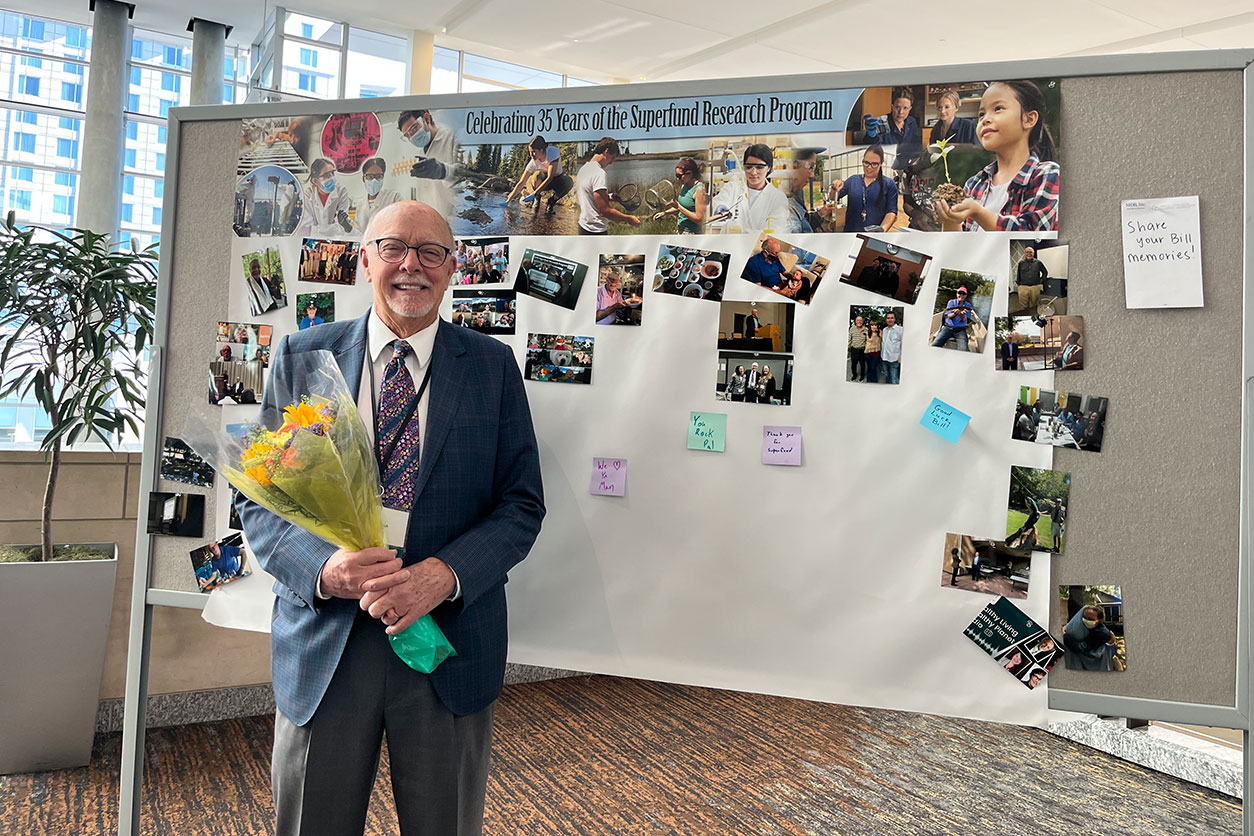
“The idea of bridging biomedical research and environmental science and engineering was not heard of,” he noted. “This was totally unique.”
Open communication
More than three decades and 1,300 funded researchers later, SRP remains a pioneer in environmental health research. The annual meeting emphasized the program’s commitment to understanding and alleviating environmental health disparities, which occur when communities exposed to a combination of degraded environmental quality and social inequities endure more illness and disease than wealthier, less polluted communities.

A satellite session for members of SRP Research Translation and Community Engagement cores focused specifically on advancing environmental justice. During that session, members of an expert panel emphasized the value of consistent dialogue between researchers and the communities they work with.
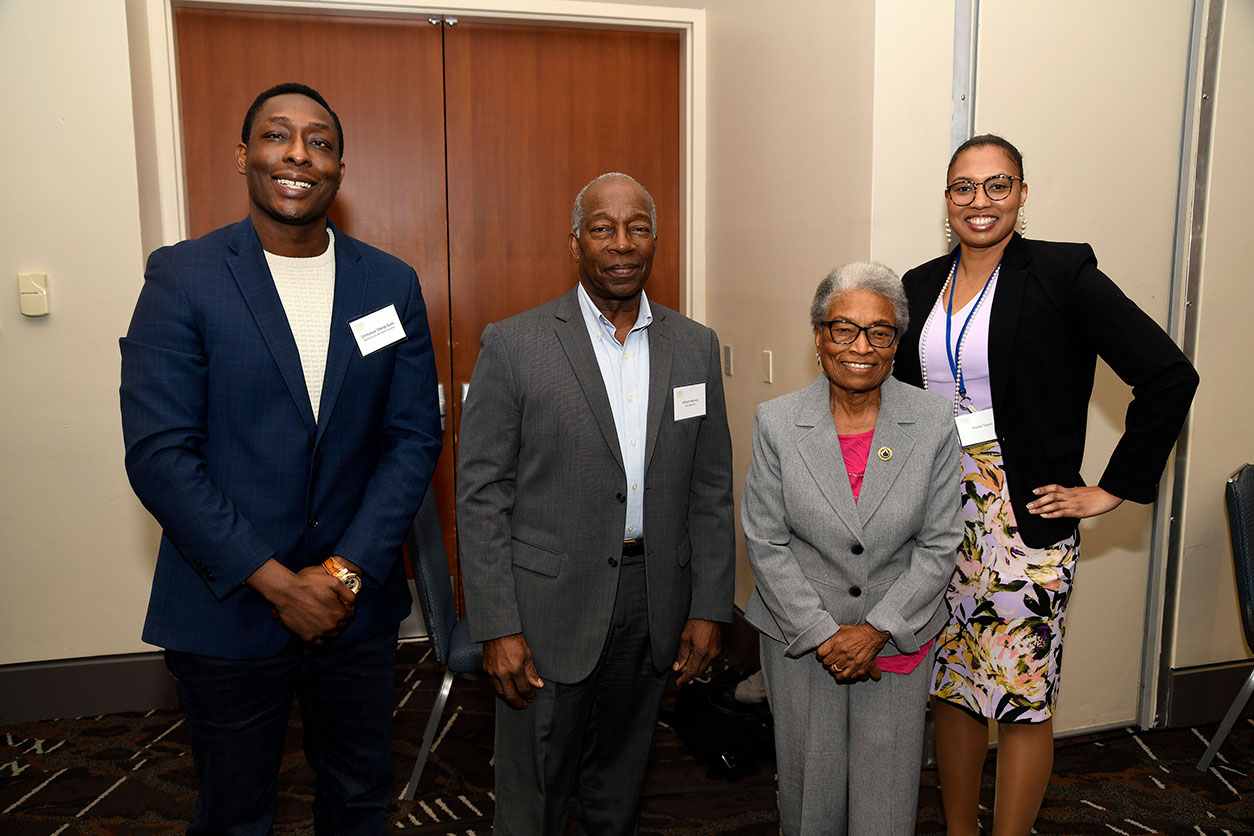
“We need sustainable, long-term solutions,” said panelist Emmanuel Obeng-Gyasi, Ph.D., an environmental health scientist at North Carolina A&T State University. “It’s not enough to come in and say, ‘You’ve been exposed to certain chemicals.’ Academics need to work with communities to come up with actions and solutions to the issues. If not, it’s just fearmongering.”
However, implementing solutions — particularly at the structural level — can be challenging, as former SRP trainee Mónica Ramírez-Andreotta, Ph.D., noted during a related presentation. Drawing on a 2021 SRP-funded paper, Ramírez-Andreotta — who now leads research translation activities at the University of Arizona SRP Center — offered tips for participatory research projects aimed at structural change.
- Engage decisionmakers from the beginning.
- Leverage data science and data sharing.
- Designate formal participation roles to community members.
- Collect quantitative and qualitative data.
- Embrace local knowledge.
- Challenge the typical four-year grant cycle.
As Obeng-Gyasi observed, “Work together, meet regularly. Nothing happens by just being alone. Bring together affected community members, activists, and allies. It’s a collaborative effort, especially for marginalized communities.”
Keynote speakers also reminded researchers to check their own biases. Kim Fortun, Ph.D., a cultural analyst at the University of California, Irvine, explained how people’s social and cultural experiences frame their perspective.
In a similar vein, guest speaker Jonathan Jackson, Ph.D., a cognitive neuroscientist at Massachusetts General Hospital, called for improved measures of diversity in clinical research. He challenged researchers to consider how they design and implement studies, select participants, and choose variables. Race, for example, is typically a poor proxy for socioeconomic factors.
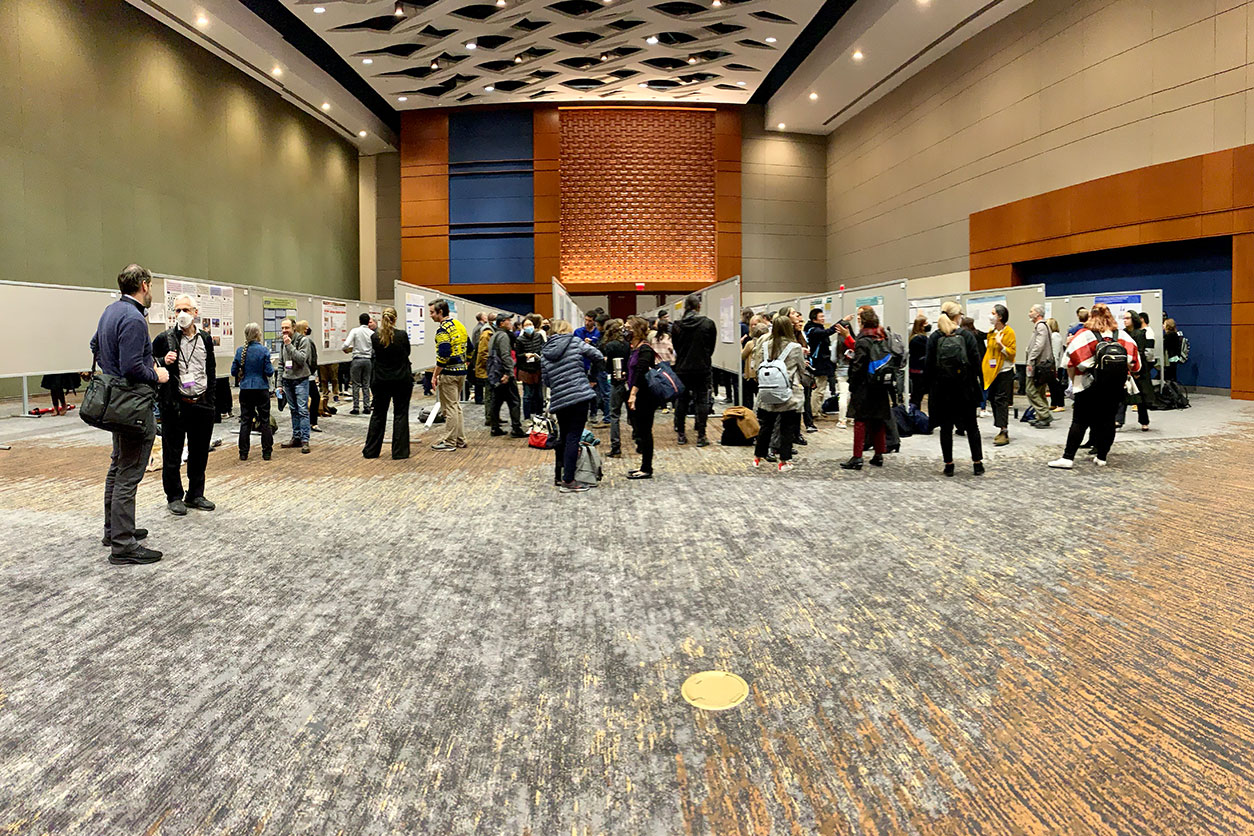
“When we make assumptions about the kinds of barriers groups face, we need to make sure we back that up with some sort of quantifiable evidence,” Jackson said. “Diversity, equity, justice — these are not things that are antithetical to rigorous science.”
Emphasis on training
Since its inception, SRP has supported more than 2,500 trainees as the next generation of scientific leaders. During the meeting, nearly 200 current and former trainees presented their work on stage and during poster sessions, including multiple K.C. Donnelly externship recipients.
Nancy Cardona-Cordero, Ph.D., shared her findings on how pregnant women’s choice of beauty products may affect their exposure to chemicals called phthalates. Cardona-Cordero completed her externship at the University of Arizona and now works with the Northeastern University SRP Center’s Community Engagement Core.
Oregon State University SRP Center trainee Victoria Colvin described her externship work with the Massachusetts Institute of Technology (MIT) SRP Center. She learned how to use the CometChip assay to detect DNA damage in human lung cells exposed to a benzo(a)pyrene, a type of polycyclic aromatic hydrocarbon.
For his externship, Matthew Dunn, a University of Rhode Island SRP Center trainee, worked with Cyclopure, Inc., an SRP-funded small business that develops technologies to rapidly remove PFAS from drinking water. He explained how he validated a novel passive sampler for PFAS, made from a sugar called cyclodextrin.
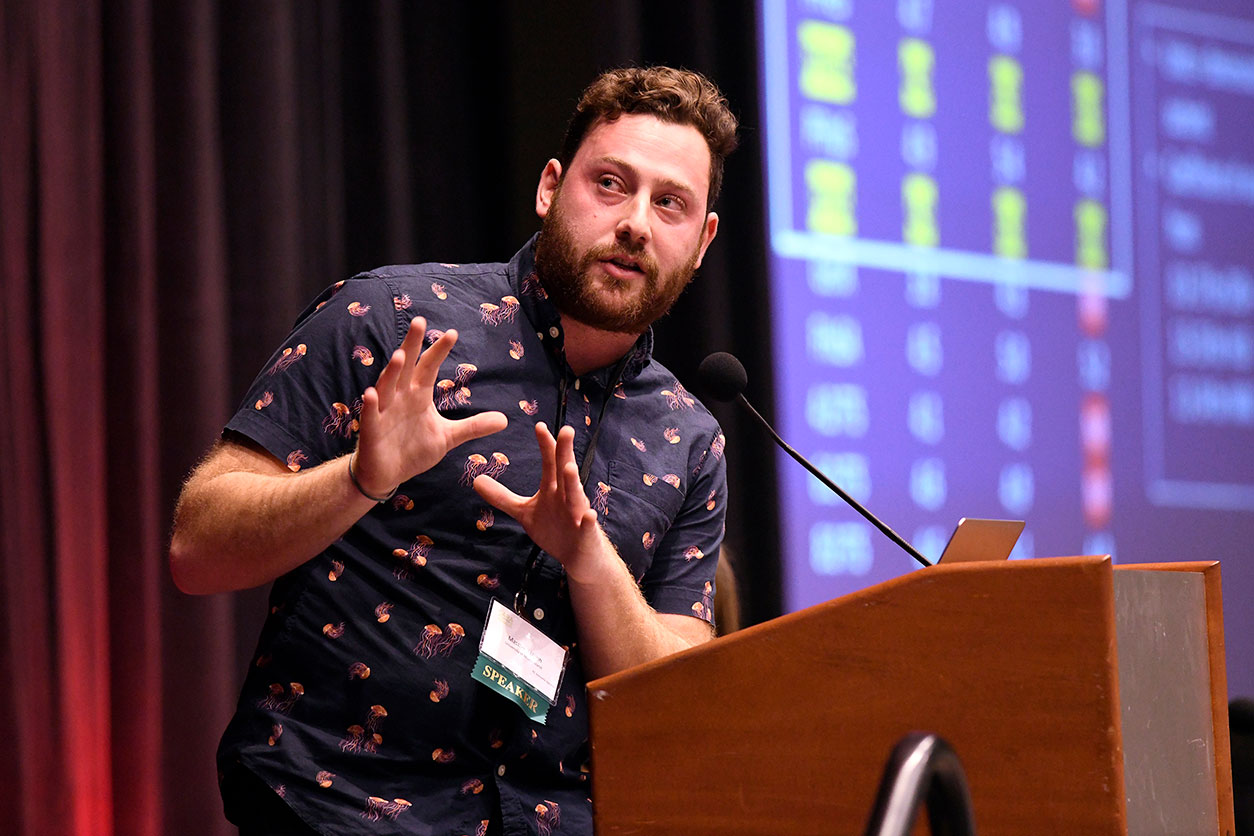
Skarlet Velasquez, a trainee with the Northeastern University SRP Center, shared her externship work analyzing exposure data collected from silicone wristbands worn by members of the New Hampshire Birth Cohort Study. Velasquez completed her externship with the Dartmouth University SRP Center.
Passing the torch
Meeting attendees also honored the 2022 Wetterhahn Award winner, Amanda Armijo, D.V.M., Ph.D., of MIT. The award recognizes an outstanding graduate student or postdoctoral researcher who exhibits qualities of scientific excellence.
“Wetterhahn Award winners are part of SRP’s first-rate training program of early-career investigators,” Suk said. “These individuals are shaping the environmental health sciences.”
“I’m truly honored to have been selected for this award,” said Armijo, the 25th recipient of the prestigious honor. “There are no words that can fully express or capture my feelings.”
(Julie Leibach is a senior science writer at MDB, Inc., a contractor for the NIEHS Division of Extramural Research and Training.)





